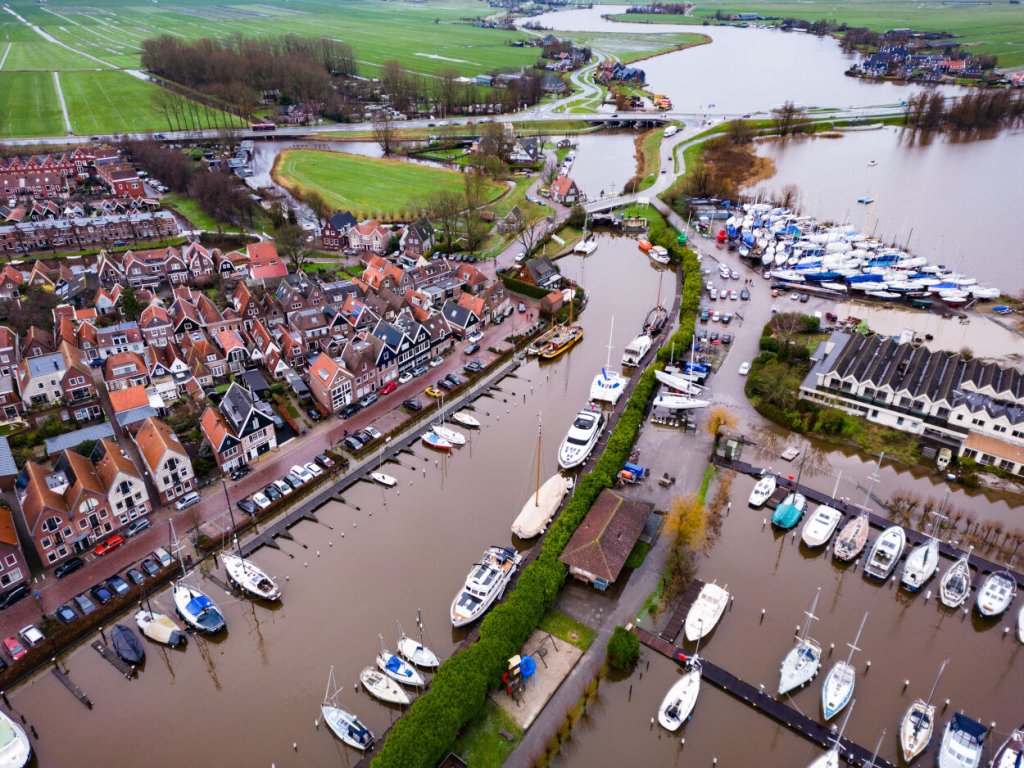Outer dike area
Almost all of Hollands Noorderkwartier, North Holland above the North Sea Canal, lies below sea level. The dunes and the primary flood defenses - the dikes that protect us from the North Sea, the Wadden Sea, the IJssel and Markermeer lakes - are therefore very important to prevent flooding.
Flooding outside the dike
So areas that lie in front of the primary flood barrier and the sea or the IJssel or Markermeer are not protected by those dikes. We call these the areas outside the dikes. Yet people live, work and recreate there. There are homes, business premises, recreation parks, bicycle paths, agricultural land and nature. Under normal circumstances the water does not go beyond the banks. But under special circumstances, flooding can occur there. Due to climate change, special circumstances occur more often and the probability of flooding of the area outside the dikes has increased.
More extremes
Climate change continues. Weather conditions are becoming more extreme. Storms from the 'wrong' direction combined with a lot of rain increase the chance of flooding. Especially in areas outside the dikes. That happened in 2021 when Rijkswaterstaat had just raised the water level in the IJsselmeer and Markermeer lakes to the summer level (to prevent drought later), and a spring storm also blew up. And it happened again in late 2023/early 2024 after a long period with a lot of rainfall, a lot of supply from the rivers and few possibilities to drain the water towards the Wadden Sea, so the water level in the IJssel and Markermeer was very high. Wind from southern and eastern directions pushed the water up the low-lying outer dike area.

A little more risk
So those who live in areas outside the dikes cannot count on dike protection. The chance of flooding there is still small, but the risk has increased slightly due to climate change. That risk depends mainly on the location of your home, business premises or other real estate. In general, the further from the water and the higher, the drier.
No legal task
Outside the dikes, HHNK has no legal duty to prevent or counteract flooding. The primary dike forms the boundary of the area for which we are responsible to limit flooding nuisance. In the event of flooding in the area outside the dike, the municipality assesses the actual safety situation, communicates about it and weighs the usefulness and necessity of additional protective measures. You are responsible for the protection of your real estate and other possessions.
What can you do yourself?
On the page What can you do yourself against flooding? you will find various tips to protect your home and property such as "install water retaining bulkheads" or "waterproof your basement. Many tips deal with flooding caused by rainwater, some of them also help reduce the effects of flooding.
Reduced water system levy rate
If you own one or more homes, business premises or agricultural land, you do not benefit from dike protection for this property. You therefore pay a reduced rate of 25% for the water system levy for owners. The water system levy pays for much more, so owners and residents of areas outside the dikes also contribute.
More than dikes
Because almost all of Hollands Noorderkwartier lies below sea level, water must be continuously pumped away - via a system of pumping stations, ditches and canals - to keep feet dry. Those pumping stations also drain rainwater. And during drought conditions they supply water from the IJsselmeer and Markermeer lakes. Those pumping stations have to be maintained, sometimes renovated and occasionally we build a new pumping station. The water level in all these watercourses must be regulated. And also improving the water quality, mowing and dredging the ditches, and also the contribution to biodiversity are paid from the proceeds of the water system levy.
Everyone contributes
That's why all residents and businesses contribute to the water system. You pay not only for the protection of your personal property, but also for the water system in the entire area where you live, work and recreate. By the way, this is not a choice of HHNK; according to the Water Board Act (art. 121) a maximum discount of 75% on the Water System Levy may be given.
